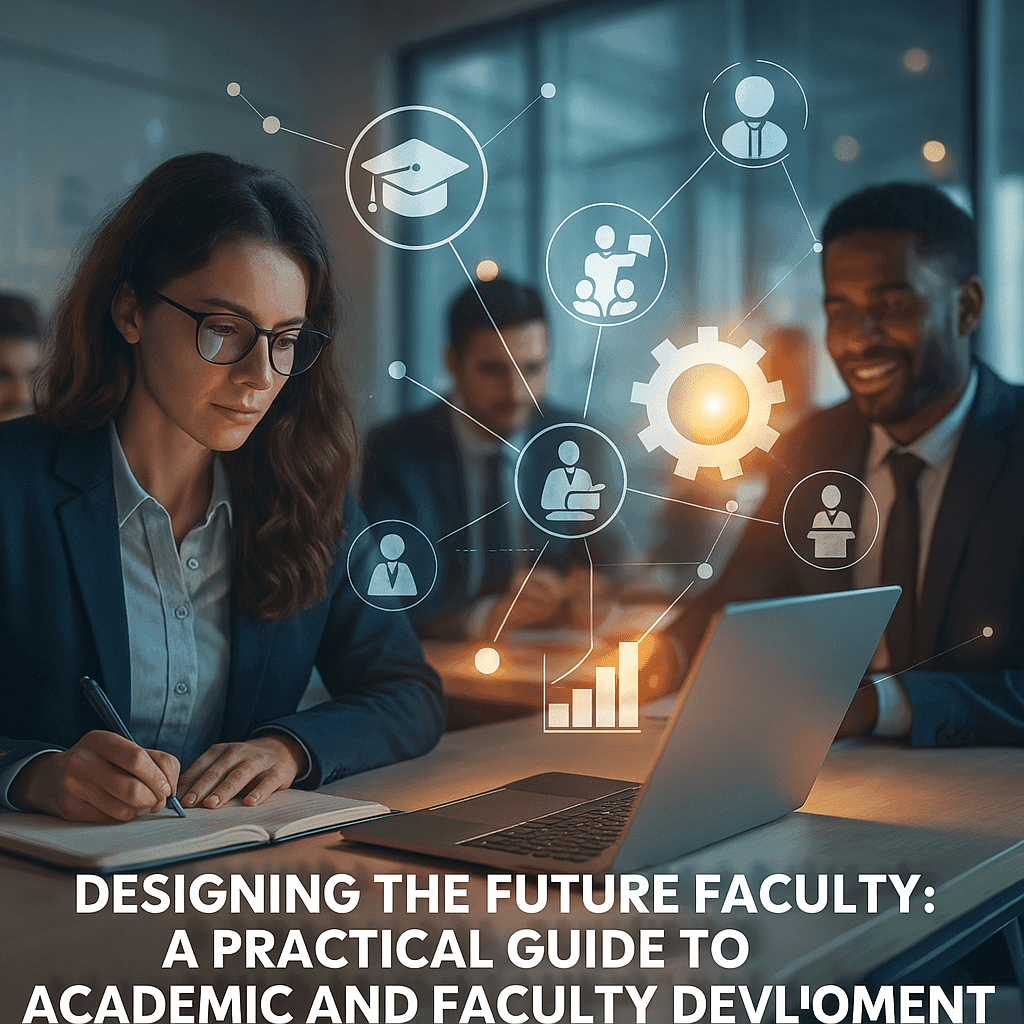
In today’s rapidly evolving academic landscape, faculty members are no longer limited to traditional roles of teaching and research. They are leaders, innovators, mentors, and change agents navigating new pedagogies, digital tools, and societal expectations. Academic and faculty development, therefore, must go beyond workshops—it must be strategic, personalised, and aligned with institutional goals.
This post explores how universities and individuals can design meaningful professional development pathways that elevate teaching quality, research impact, and academic leadership.
Success Story: AI-Powered Personalisation in a Business School Setting
1. Why Faculty Development Is Mission-Critical
Higher education institutions are under pressure to remain relevant in the face of globalisation, technology disruption, and student diversity. Faculty are the frontline workforce driving this mission.
Key Drivers for Faculty Development:
- Pedagogical Innovation: Moving beyond lectures to active, inclusive, and hybrid models.
- Digital Fluency: Navigating AI, LMSs, MOOCs, and assessment tech.
- Interdisciplinary Thinking: Collaborating across domains for research and curriculum innovation.
- Career Progression: Supporting promotions, portfolio-building, and leadership pathways.
Faculty development isn’t a luxury, it’s the backbone of institutional excellence and student success.
2. The Faculty Lifecycle: Stages and Needs
Effective development begins by recognising the faculty lifecycle—each stage demands different support structures.
| Stage | Focus Areas | Development Needs |
|---|---|---|
| Early Career (Lecturer/Assistant Prof) | Teaching foundation, research identity | Mentorship, pedagogy training, grant writing |
| Mid-Career (Assoc. Prof) | Balance, recognition, impact | Sabbaticals, leadership roles, publishing strategy |
| Senior (Prof/Dean) | Influence, legacy, systems thinking | Policy-making, international engagement, mentoring others |
Tailoring development plans to these stages ensures relevance and engagement.
3. Professional Development Pathways That Work
Here’s a model for structuring high-impact development:
A. Teaching Excellence Track
- Course design bootcamps
- Inclusive teaching methods
- AI-powered learning design (e.g., using ChatGPT for content generation)
- Peer observation and micro-teaching rounds
B. Research Impact Track
- Research roadmap planning
- Interdisciplinary grant writing workshops
- Publication clinics (Q1/Q2 journals focus)
- Citation building and Google Scholar optimisation
C. Academic Leadership Track
- Leading curriculum reform
- Conflict resolution and people management
- Financial and strategic planning
- Leading digital transformation initiatives
A structured portfolio of learning (digital or physical) enables institutions to track and scaffold growth.
4. Tools and Credentials for 21st Century Faculty
Forward-thinking faculty are augmenting their growth with new tools and credentials:
| Tool or Credential | Purpose |
|---|---|
| Advance HE (UK) | Fellowship recognition across teaching levels |
| CIPD/SEDA | HR and education-focused credentials |
| Digital Portfolios | Showcasing achievements for tenure or awards |
| Learning Analytics Dashboards | Monitoring course impact and student performance |
| Generative AI Tools | Streamlining course design and reflection writing |
For example, a Senior Fellowship of Advance HE demonstrates national and global recognition of pedagogic leadership and strategic influence.
5. Building a Faculty Development Ecosystem
Institutions need more than ad hoc training. A true ecosystem integrates:
- Strategic Planning: Link development to accreditation, rankings, and student success.
- Faculty-Led Innovation: Allow faculty to propose and lead learning circles or mini-grants.
- Recognition and Incentives: Tie completion to promotion points, bonuses, or sabbaticals.
- Mentorship Networks: Match early-career faculty with senior mentors in structured formats.
A university that integrates these layers sees higher retention, better student outcomes, and more impactful research.
6. Embracing Digital and AI-Enhanced Development
Faculty development itself is being transformed:
- Online PD Platforms: On-demand micro-courses on topics from assessment design to digital wellbeing.
- AI Coaching Tools: Real-time feedback on teaching videos, syllabi, or research abstracts.
- Virtual Learning Communities: Cross-country faculty networks sharing teaching ideas and research leads.
Example: A faculty member records a teaching session, uploads it to an AI platform, and receives feedback on pacing, clarity, and engagement strategies instantly.
Visit The Case HQ for 95+ courses
Read More:
Smart Strategies for Conducting a Literature Review using AI Tools
Innovative Strategies: How Universities Integrate ChatGPT Into Its Curriculum
Exciting Vision: What Will the AI-Native Classroom Look Like by 2030?
Essential Guide: Should Educators Be Trained in Prompt Engineering?
Comprehensive Comparison of Gen AI Tools: ChatGPT, Claude, Gemini, and More
Plagiarism or Productivity? The Truth About AI Use in Student Work
Critical Analysis: How Students Use Gen AI for Essay Writing—Should We Be Concerned?
Essential Comparison of CLSSGB vs CSSGB: Which Six Sigma Green Belt Is Right for You?
Powerful Guide to Writing Exam Questions Using Gen AI Effectively
Time-Saving Power of Using ChatGPT to Generate Lesson Plans in Minutes
https://thecasehq.com/designing-the-future-faculty-a-practical-guide/?fsp_sid=1293
Comments
Post a Comment